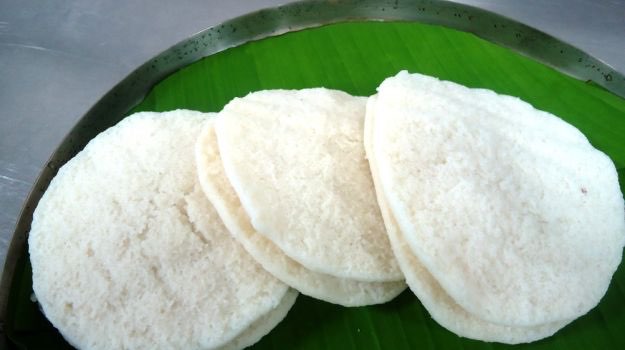The in style Ramasseri idli, a fusion of an idli and a dosa, has a particular texture.
Driving previous paddy fields touched with gold, and swaying palms, we attain Ramasseri, a dusty, nondescript village about eight kilometres from Palakkad, in time for breakfast. It is 8.30 am, and the village remains to be waking up from the celebrations of the temple competition the earlier night time.
Yet, a line of swanky vehicles is already queuing up beside a small joint with shiny inexperienced partitions and a signboard bearing the identify Sree Saraswathy Tea Stall, The Ramassery Idli Kada.
Is it an idli or a dosa? An idli, insist locals. This is the well-known Ramasseri idli, a fusion of the 2. Soft and fluffy and the dimensions of a pancake, the Ramasseri idli with its distinctive texture and style has put this little village on the meals map of India.
From 5 am to 11 am the Ramasseri idli is made continuous on the ‘tea stall’, one among the many three or 4 small eateries on the roadside. A no-frills joint, it attracts diners from throughout the State and outdoors.
The two ladies, busy within the kitchen, have little time for small speak. Vijayakumar PK, the proprietor, says the stall is 200 years outdated and that Smitha Vijayakumar, his spouse is the fifth era of ladies persevering with the custom of constructing the Ramasseri idli.
Smita pours the dough on sq. items of material, stretched over a round sieve-like clay steamer positioned on aluminium pots. As she works, she explains how most of the households have roots in Kanchipuram in Tamil Nadu and most of them had been weavers.
Story behind the idli
The native story is that the idli was first made by Smitha’s ancestor, Chittoori Ammal to make ends meet when weaving did not get sufficient patrons. Initially bought to labourers and farm employees within the village, the idli might hold for every week with out spoiling. But not any extra.
Smitha says that’s as a result of the standard of the rice and urad dal has modified. Earlier, they used to mill and use paddy from their fields. “Rice and urad dal are soaked overnight, then ground. The proportion and ingredients are a family secret,” says Smitha, including that they make the batter on a regular basis.
The pots and the clay ring to carry the sieve-like internet was made by native potters. The sieve was made with fishing nets manufactured from cotton threads. When fishing nets switched to nylon and artificial threads, the ladies started plaiting cotton to make the web.
A humid piece of material is unfold on the clay sieve and the dough is poured on it to make the Ramasseri idli.
The batter is poured on the dampened cotton fabric on the earthen steamer. Three are stacked, one above the opposite, on a blackened aluminium pot on the fuel range. Then it’s coated with one other aluminium pot.
Till just a few years in the past, the idlis had been made on firewood stoves and earthen pots. “Only firewood of the tamarind tree was used. However, all that is extremely difficult to buy nowadays. We have to move with the times,” she says. Now there aren’t sufficient potters to make the pots and rings.
Only the round steamers, chipped and aged, are nonetheless manufactured from clay.
As we converse, steam rises steadily from the pots. Ten minutes later, the one on the highest is eliminated and sizzling idlis are slid on to a leaf set on a plate. Served with aromatic, creamy coconut milk stew, coconut chutney, tomato chutney and a fiery podi, the idli melts within the mouth.
About 600 to 700 idlis are made each day and on weekends it will increase to 1,500. Smitha has travelled to varied locations to make the idli as a part of occasions organised by the Government and personal organisers.
They additionally cater to weddings and personal features. “We have been to Thiruvananthapuram and Kozhikode as part of fêtes,” she says. “Wherever we go, the Ramasseri idli is a hit with customers.”
Given the dish’s reputation, not too long ago, for the primary time, a department of Sree Saraswathy Tea Stall was opened in Guruvayoor.

























